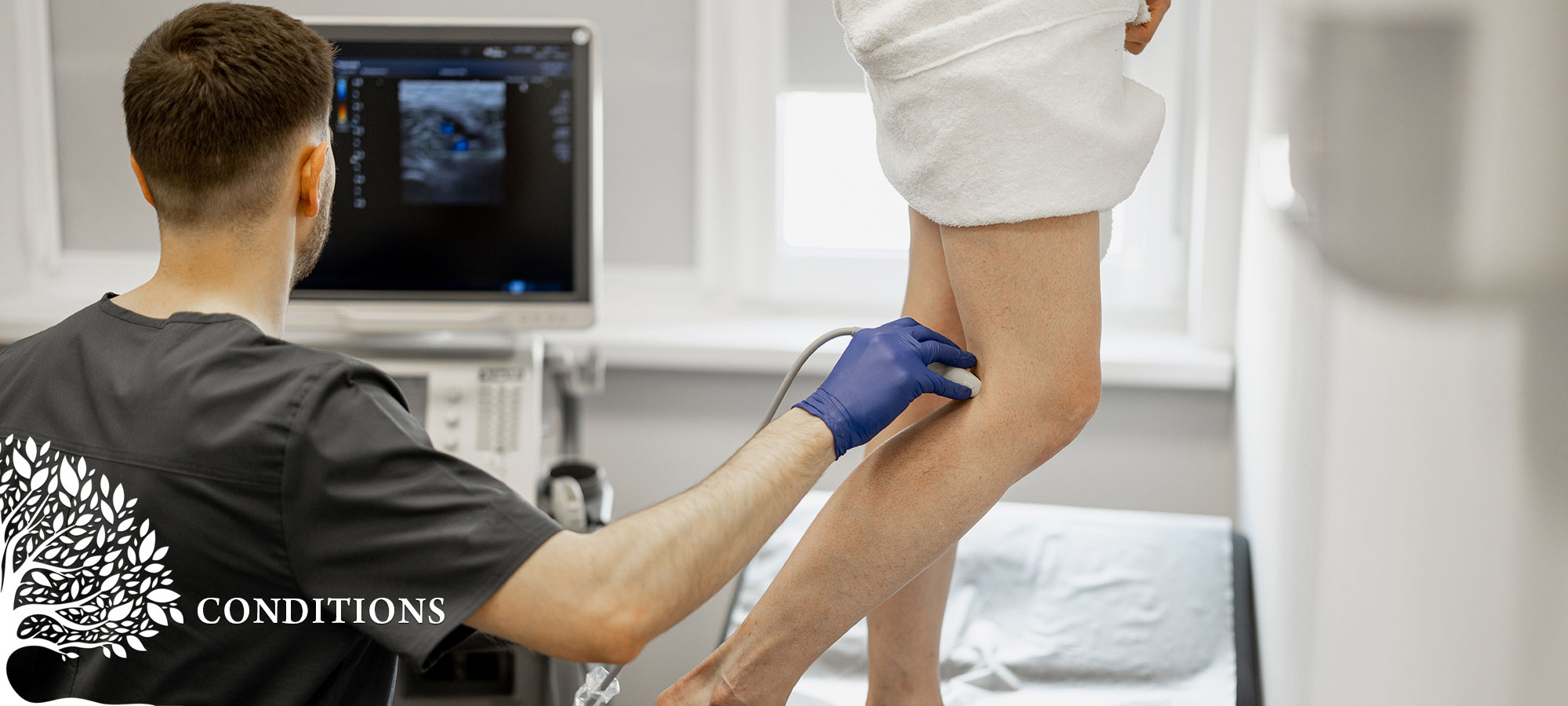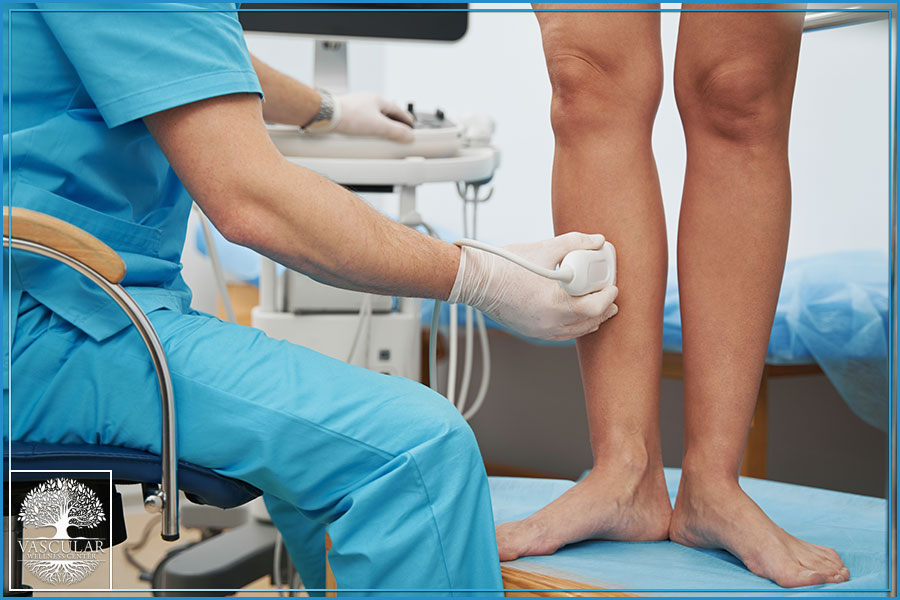

Peripheral Artery Disease
A cardiovascular condition known as peripheral arterial disease (PAD) occurs when plaque build up increases within the arteries , lowering blood flow to the limbs. PAD is a dangerous illness that frequently remains untreated until symptoms appear.

Deep Vein Thrombosis (DVT)
Deep Vein Thrombosis (DVT) occurs when a blood clot develops in one of the body’s deep veins, most often in the lower legs. Risk factors for DVT include prolonged inactivity, advanced age, obesity, recent surgery, and hormonal therapy use. A critical danger arises if the clot dislodges and travels to the lungs, causing a life-threatening condition called a pulmonary embolism (PE).

Aneurysms
An aneurysm occurs when a section of an artery wall becomes damaged and weak, leading to a bulging or ballooning of the vessel. This dilation can develop gradually, most commonly in the abdominal aorta, the primary artery supplying blood to the legs, but it can affect any artery in the body. The most severe risk associated with an aneurysm is rupture, which can lead to life-threatening internal bleeding. Detecting the aneurysm early for treatment is critical to prevent rupture and related complications.

Carotid Artery Stenosis (CAS)
Carotid Artery Stenosis (CAS) occurs when plaque, primarily composed of fat and cholesterol, builds up inside the carotid arteries, causing them to stiffen, a condition commonly referred to as hardening of the arteries. This narrowing restricts blood flow to the brain, depriving it of oxygen, glucose, and essential nutrients. If the plaque ruptures, it can send debris to the brain, potentially triggering a stroke.

Chronic Venous Insufficiency (CVI)
Chronic Venous Insufficiency (CVI) is a common cardiovascular condition caused by malfunctioning valves in the veins of the lower legs. Normally, blood returns to the heart through regular leg movements like walking. When the valves fail to work correctly, blood can pool in the lower legs, leading to increased pressure, discomfort, and potential complications if left untreated. Approximately 150,000 new cases of CVI are diagnosed annually in the U.S., with an estimated $500 million spent on patient care. Women over 50, especially those with a history of multiple pregnancies, are most commonly affected.

Post-Thrombotic Syndrome
Post-Thrombotic Syndrome (PTS) is a common issue that can arise following Deep Vein Thrombosis (DVT). Veins in the arms and legs have small valves inside them that help direct blood flow correctly. When a DVT occurs, the resulting clot can damage these valves and compromise normal circulation.

Renal Artery Stenosis (RAS)
Renal Artery Stenosis (RAS) occurs when the arteries supplying blood to the kidneys become narrowed. These arteries carry oxygen-rich blood essential for helping the kidneys remove waste and excess fluids. When these arteries narrow, it can gradually lead to high blood pressure (hypertension), kidney damage, and, in severe cases, kidney failure.

